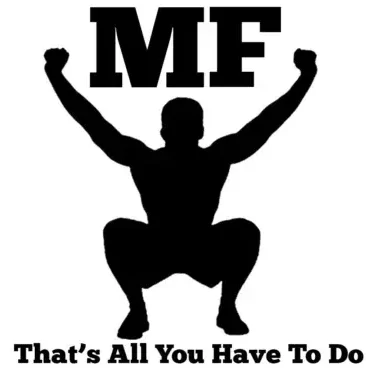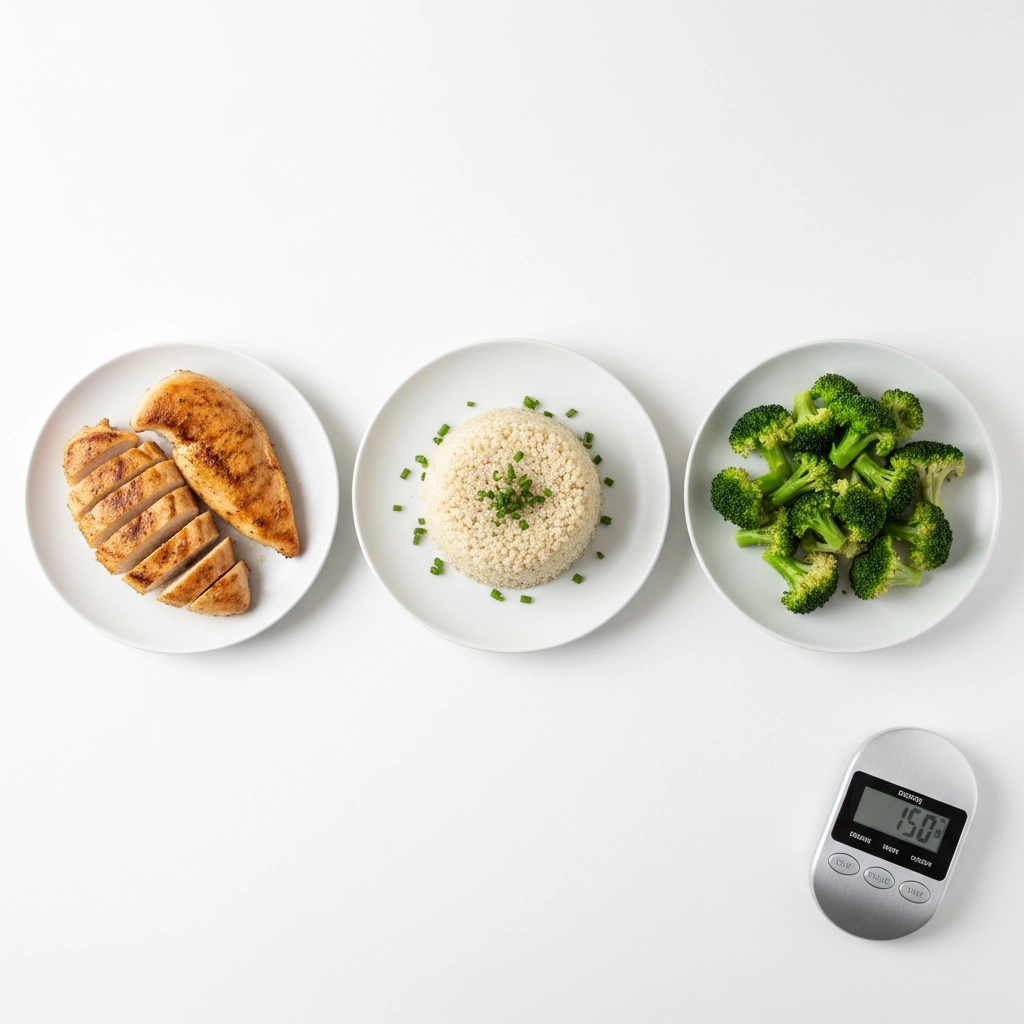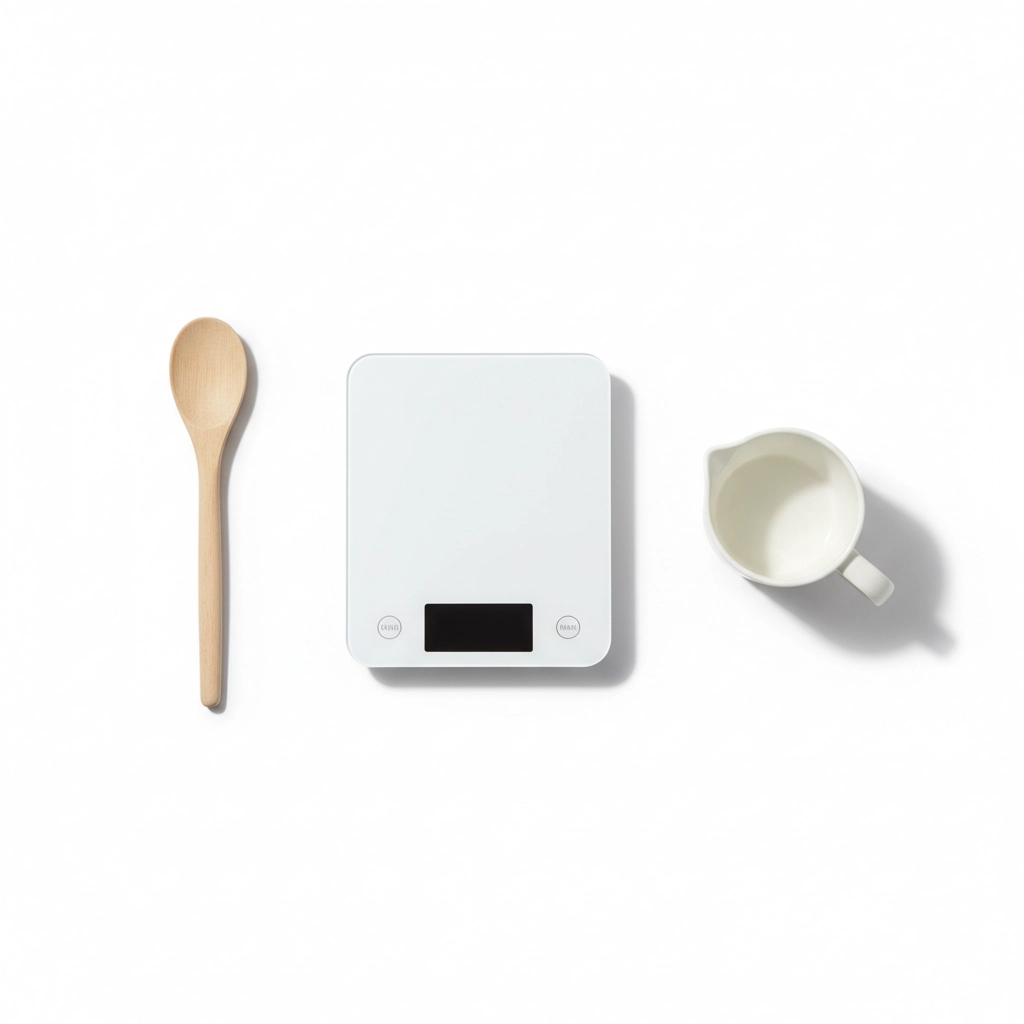Does portions size matters?
Let’s be honest – when you’re trying to lose fat, especially as we get older, it can feel like you’re doing everything right but still not seeing the results you want. You’re eating healthier foods, cutting back on portions, maybe even exercising more. So why isn’t the scale budging?
The answer might be simpler than you think: you’re probably eating more than you realize. And that’s not your fault – it’s incredibly common, and there’s a solution that can change everything.
The Problem with “Eyeballing” Your Portions
We’ve all done it. You grab a handful of nuts, pour what looks like a reasonable amount of cereal, or cut yourself a “small” slice of cheese. But here’s what research shows us: most people consistently underestimate how much they’re actually eating, sometimes by as much as 25-40%.
Think about it – when you go to a restaurant, those portions have probably skewed your idea of what a “normal” serving looks like. That pasta bowl? It’s likely 3-4 actual servings. That chicken breast? Probably twice the recommended portion size. Over the years, our eyes have adapted to these supersized portions, making it nearly impossible to accurately estimate appropriate amounts at home.
This becomes especially problematic with calorie-dense foods. A small handful of almonds might seem innocent, but it could easily be 200-300 calories – enough to wipe out your entire caloric deficit for the day. Even healthy foods like avocado, olive oil, or nut butters can quickly add up when you’re not measuring them precisely.
Why Measuring Your Food Changes Everything
When you start weighing and measuring your food, something amazing happens: you become aware of what you’re actually consuming, not just what you think you’re eating. This awareness is the foundation of successful fat loss.
You’ll Finally Understand Portion Sizes
A food scale doesn’t lie. When you see that your “small” bowl of oatmeal is actually 1.5 servings, or that your generous drizzle of olive oil is 3 tablespoons instead of 1, you gain real insight into where those extra calories are coming from. This isn’t about restricting yourself – it’s about making informed choices.
You’ll Stop the Guesswork
No more wondering why your progress has stalled. When you measure your food, you have concrete data about your intake. If you’re not losing fat, you can make specific adjustments rather than just “eating less” and hoping for the best.
You’ll Build Better Habits
Measuring your food might seem tedious at first, but it actually helps you develop a better relationship with portions. After a few weeks, you’ll start to recognize what appropriate servings look like, making it easier to maintain your progress even when you’re not actively measuring.
Beyond Calories: Why Macros Matter for Fat Loss
While creating a caloric deficit is essential for fat loss, focusing solely on calories is like driving with one eye closed – you’ll get there eventually, but it’s not the most efficient route. This is where understanding and tracking your macronutrients (protein, carbohydrates, and fats) becomes incredibly valuable.
[For a deeper dive into why macro tracking is so powerful, check out our comprehensive guide on why tracking macros is important and how it can change your health.]
Protein: Your Fat Loss Secret Weapon
Protein is particularly crucial as we age. Not only does it help preserve muscle mass during weight loss (which keeps your metabolism higher), but it’s also the most satisfying macronutrient. When you eat adequate protein, you naturally feel fuller longer, making it easier to stick to your caloric goals without feeling deprived.
Research shows that people who consume higher protein diets while in a caloric deficit retain more muscle mass and lose more fat compared to those eating lower protein amounts. For older adults, this is especially important since we naturally lose muscle mass as we age.
Carbohydrates: Fuel for Your Workouts
Carbs aren’t the enemy – they’re fuel. The key is choosing the right types and amounts. Complex carbohydrates provide steady energy and help you feel satisfied, while simple carbs can leave you hungry and craving more food shortly after eating.
Fats: Essential for Health
Healthy fats support hormone production, help absorb fat-soluble vitamins, and contribute to satiety. They’re calorie-dense, so measuring them is crucial, but they play important roles in overall health and satisfaction with your meals.
How Macro Apps Transform Your Approach
This is where modern technology becomes your best friend. A good macro tracking app takes the complexity out of measuring and tracking your food while providing insights that go far beyond simple calorie counting.
Comprehensive Nutrient Breakdown
Unlike basic calorie counters, macro apps show you exactly how much protein, carbohydrates, and fat you’re consuming. This allows you to make strategic adjustments – maybe you need more protein at breakfast, or you’re consistently low on healthy fats.
Pattern Recognition
After a few weeks of tracking, you’ll start to see patterns in your eating habits. Maybe you consistently overeat at dinner because you don’t eat enough during the day, or perhaps you’re not getting enough protein to support your goals. This awareness allows you to make targeted changes rather than overhauling your entire diet.
Micronutrient Monitoring
Many macro apps also track vitamins and minerals, helping ensure you’re not just hitting your macro targets but also getting adequate nutrition. This is particularly important as we age and our nutrient needs may increase while our calorie needs decrease.
Goal-Specific Recommendations
Whether your focus is fat loss, muscle gain, or simply maintaining your current weight while improving body composition, macro apps can provide personalized targets based on your specific goals, activity level, and preferences.
Getting Started: Your First Steps to Success
If you’re ready to take control of your fat loss journey, here’s how to begin:
Start with a Digital Food Scale
This is your most important tool. Look for one that measures in grams for the most accuracy. You don’t need anything fancy – a basic digital scale that’s accurate and easy to clean will serve you well.
Choose the Right App
Not all macro apps are created equal. Look for one with a comprehensive food database, easy logging features, and the ability to scan barcodes for packaged foods. The easier it is to use, the more likely you’ll stick with it.
Begin with Just Measuring
For your first week, simply measure and log your food without trying to change anything. This baseline will show you where you’re starting from and might reveal some surprising insights about your current eating habits.
Focus on Consistency, Not Perfection
You don’t need to measure every single thing you eat for the rest of your life. The goal is to develop awareness and learn appropriate portion sizes. Many people find that after a few months of consistent tracking, they can maintain their results with occasional check-ins.
Making It Sustainable
The key to long-term success isn’t perfection – it’s consistency. Some days you might not track everything, and that’s okay. The awareness you’ve developed will carry you through. Many people find they can maintain their results by measuring their food a few days a week or during specific meals where they tend to overeat.
Remember, measuring your food isn’t about restriction – it’s about empowerment. When you know exactly what you’re eating, you can make informed decisions that align with your goals. You might discover you can eat more of certain foods than you thought, while others need to be enjoyed in smaller portions.
Take Control of Your Fat Loss Journey
If you’re ready to transform your approach to fat loss and finally see the results you’ve been working toward, it’s time to embrace the power of precise nutrition tracking. The combination of measuring your food and understanding your macronutrient intake provides the clarity and control you need to succeed.
To make this journey even easier, we’ve developed a comprehensive macro tracking app specifically designed with your needs in mind. Our app takes the guesswork out of macro tracking with user-friendly features, extensive food databases, and personalized recommendations tailored to your goals.
Ready to take the next step? Visit our store to learn more about our macro tracking app and discover how it can revolutionize your approach to nutrition and fat loss. Your future self will thank you for making this investment in your health and well-being.




